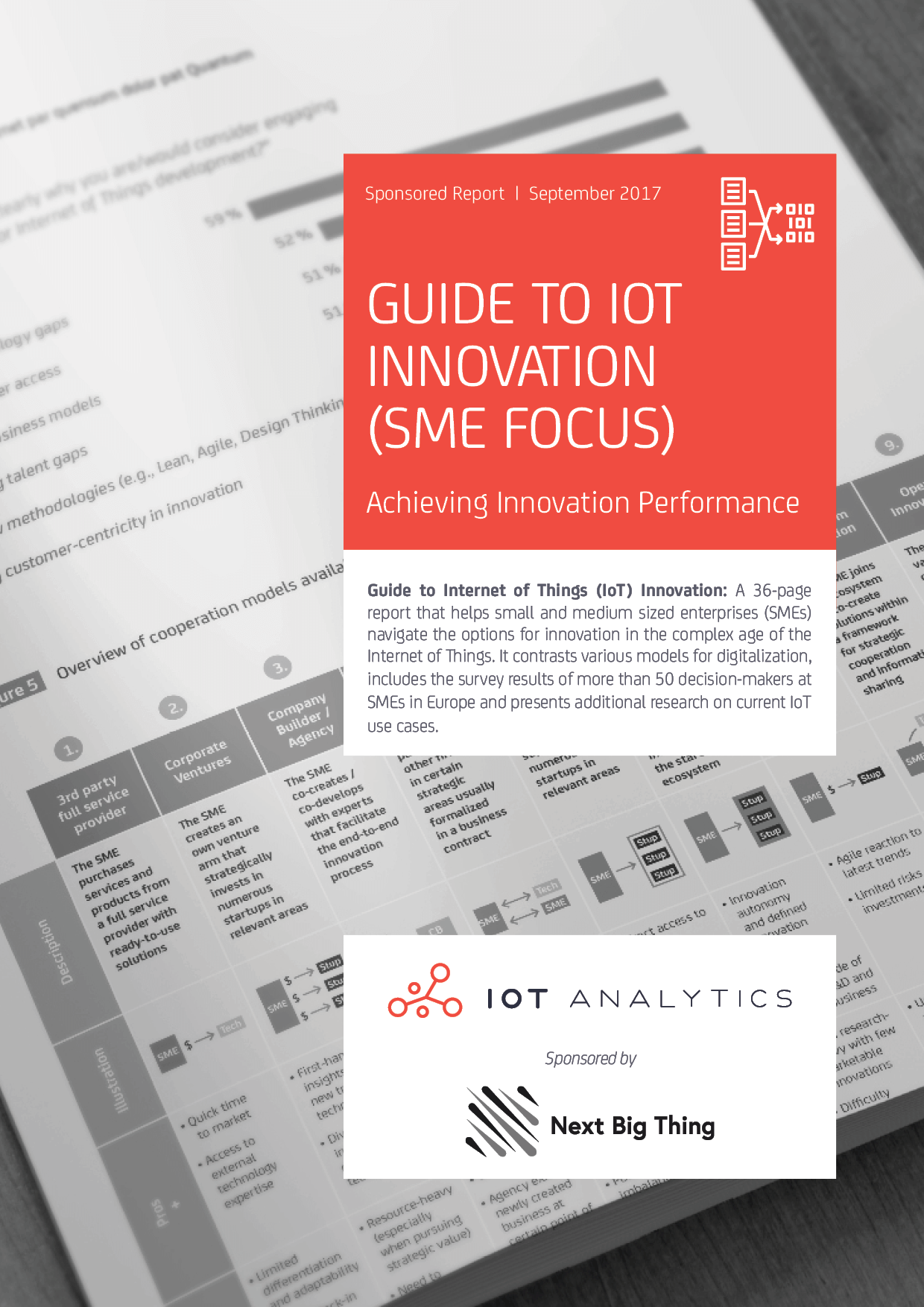Small and medium-sized businesses (SMEs) don’t possess the same options as large and multinational corporations when it comes to innovating with IoT technology. They generally do not have sufficient human, financial or development resources to create these new digital and IoT-based solutions by themselves.
IoT Analytics published a new report called Guide to IoT Innovation, which helps SMEs find a suitable model for digitalization and navigate the options for innovation in the age of the Internet of Things. The report was sponsored by Berlin-based company builder NBT.
SMEs partner in order to accelerate time-to-market
Included in the paper are the survey results of 50 professionals, who work at SMEs that either already offer IoT-based products and services or are currently in the process of developing these. The results show that, unfortunately, many small and medium sized companies lack a comprehensive vision of where IoT will take them in their industry. Very few firms seem to have a clear concept on how to tackle IoT innovation. The companies that are not completely inactive, often test a variety of models for external innovation. The #1 benefit of such partnerships: Accelerated time to market. 59% of respondents claim that it is the main reason for them to partner in IoT solution development.
The most common innovation model: Working with 3rd party service providers
There is a plethora of choices of external IoT innovation from building corporate ventures to using company builders all the way to accelerators. Out of the nine options analyzed in the IoT Innovation Guide, engaging with third party full service providers was highlighted as the most common model (44% of respondents), followed by corporate venturing (36%) and working with company builders (36%).
9 ways for external IoT Innovation ranked (by occurrence)
- Third Party Full Service Provider (44%) – The SME purchases services and products from a full service provider with ready-to-use solutions
- Corporate Ventures (36%) – The SME creates an own venture arm that strategically invests in numerous startups in relevant areas
- Company Builder/ Agency (36%) – The SME co-creates /co-develops with experts that facilitate the end-to-end innovation process
- Strategic Partnerships (32%) – The SME partners with other firms in certain strategic areas usually formalized in a business contract
- Incubators / Accelerators (30%) – The SME creates an own arm that strategically supports numerous startups in relevant areas
- Innovation Labs / Spin-off Programs (22%) – The SME creates an own separate legal entity that acts as an inhouse startup or as an interface with the startup ecosystem
- Direct Startup Engagement (20%) – The SME co-creates /co-develops directly with a start-up
- Ecosystem Innovation (16%) – The SME joins an ecosystem to co-create solutions within a framework for strategic cooperation and information sharing
- Open Innovation (10%) – The SME uses various tools of innovation across organizational boundaries (e.g., Hackathons)
Not all models are equally successful
But which of the 9 models appear to be the most successful?
The report provides an indication on the success rates of these 9 models and highlights pros and cons as well as real-life IoT innovation examples for each. It furthermore gives recommendations for SMEs that plan to innovate in IoT.
The report is available for FREE, thanks to the paper sponsor.



